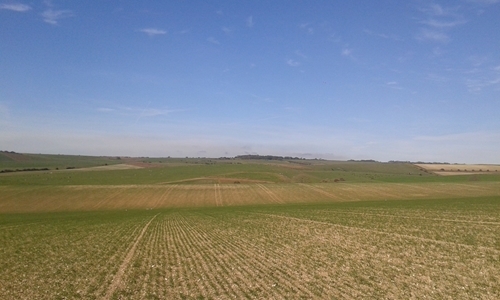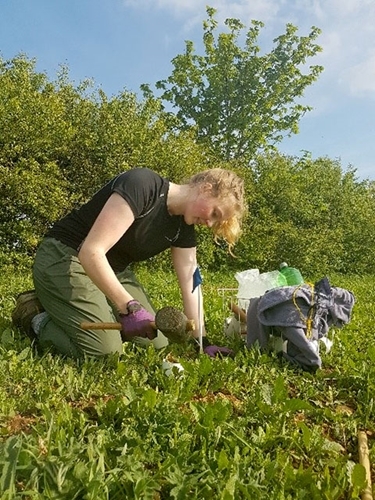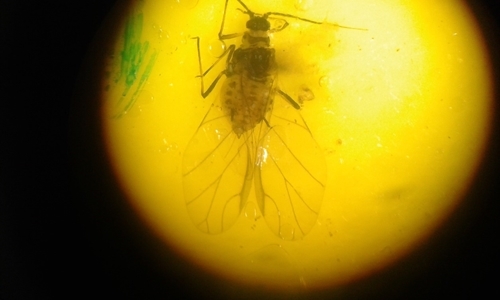Written by Ellen Knight
Growing up, I never particularly considered where the food I ate came from. It sat on a shelf at the supermarket, then it sat on a shelf in my kitchen, then it was on a plate, then I ate it. Not until I went to university and started buying my own food did I begin to think about how it was produced, and the impacts this might have on the environment and ecosystems. I think it was this in part that steered me towards applying for a placement year with the Farmland Ecology Unit (FEU) at the GWCT.
Today, over two thirds of land area in the UK is taken up by agriculture. Not only has this shaped the landscape of our country, but also the wildlife. The past century has seen huge changes in the scale and methods of farming, from the yield-centric subsidies and practices following WWII, to the introduction of the country’s first agri-environment schemes in the 1980s.
Throughout these changes, the importance of monitoring the biodiversity and habitats that UK farmlands represent has become abundantly clear. With an ever-growing population, sustainable agriculture comes more and more into focus. Somehow a balance must be struck between producing a large enough yield to feed the population and maintaining the environment and ecosystems that all species rely on to survive. The work of the FEU is largely focused on the latter aspect of this balance.
The FEU seeks “to understand the ecology behind the impact that farming has on wildlife and associated biodiversity and to find solutions.” This can involve surveying birds and bats, but often comes in the form of entomological research because invertebrate diversity can usually be used as a reliable indicator of wider biodiversity. Insects can play many roles in these ecosystems, such as pollinators, natural predators of crop pests, or food sources for birds and other farmland wildlife.
In general, the work that I’ve helped do with the FEU during my placement can be split into two categories: lab work and field work.
A lot of the entomological research conducted by the FEU involves taking samples of invertebrates in the field which will then be sorted and identified in the lab. Sampling this year has taken place on arable farms all over the country, from Yorkshire to Dorset.
The main sampling techniques I’ve been involved with have been sticky traps (sheets of plastic coated in glue that the insects get stuck to), pitfall traps (plastic cups dug into the ground that insects fall into) and D-vaccing (a motorised suction sampler that effectively inhales the insects). Some of these take a bit of work to set up but it’s worth it for the beautiful places we get to visit. That is, if it’s not pouring with rain.

The view whilst setting up sticky traps.

Getting pitfall traps in the ground requires a bit of muscle-power.
Once these samples have been collected, they’re taken back to the lab for analysis. Perhaps I’m just being romantic, but I think it’s quite poetic that my microscope sits on top of a stack of the GWCT’s previous annual reviews. The research I am contributing to today is literally being supported by years’ worth of the GWCT’s research before it.
Depending on the project, different families or species of invertebrate will be counted. These include aphids, beetles, spiders, hoppers, flies, and wasps. Often, you’ll find us crowded around somebody’s microscope, taking turns to look at an insect they’ve found. Sometimes we’re debating what kind of aphid it might be. Other times it’s just nice to look at something different when your samples have contained nothing but springtails for the past 3 days.

A grain aphid caught on a sticky trap, as seen through the microscope.
Once the samples have been sorted through, the data must be entered, checked and analysed. This can be tedious at times but it’s always satisfying when the job’s done and we can tick off another project on the long to-do list written on a whiteboard in the lab.
Another important aspect of working in the FEU is contacting farmers and organising projects. A lot of work done by the department would not be possible without the enthusiasm and cooperation of the farmers we work with. As somebody whose impressions of farmers and agriculture had previously been made almost exclusively through the mainstream media, I’ve been surprised by how geared towards change many of the farmers and landowners I’ve encountered this year have been. However, it’s always important to recognise that a farm is still a business and that this can create conflicts as any measures taken to improve biodiversity need to make overall economic sense to the owner.
I often find it quite difficult to describe to my friends and family what my placement involves and why I enjoy it. Most of the time I sum it up as “looking at insects”, because to be honest that is probably what I’ve spent the majority of my time doing. But the reason I enjoy it is because I feel like I’m contributing (in however small a way) to positive change. I’m learning new things every day, not just about how research is carried out, but how to think critically about science and how its application in a socio-economic context is not as simple as it might initially appear.
Despite this, I know I’ve barely scratched the surface of the wealth of knowledge surrounding the field of Farmland Ecology. Every question answered seems to lead to ten more questions asked. But from what I have learned, I feel as though I’ve developed a deeper understanding of the relationship between where our food comes from and its effect on the environment. What I’ve learned has also made me optimistic… Although the outlook on biodiversity in our country may sometimes seem bleak, there are solutions out there, and it’s comforting to know that there are people out there who are looking for them.